Here's a link to a great discussion that I'm basically copying here.
USGS Photo Gallery of Volcanic Terms
An igneous rock is formed by the cooling and crystallization of molten rock. The term igneous is derived from ignius, the Latin word for fire. Scientists have divided igneous rocks into two broad categories based on where the molten rock solidified. Volcanic rocks (also called extrusive igneous rocks) include all the products resulting from eruptions of lava (flows and fragmented debris called pyroclasts. Plutonic rocks (also called intrusive igneous rocks) are those that have solidified below ground; plutonic comes from Pluto, the Greek god of the underworld.
The initial distinction between volcanic and plutonic rocks is made on the basis of texture (fine-grained volcanic vs. coarse-grained plutonic). Volcanic and plutonic rocks are divided further on the basis of chemistry and mineral composition. The classification scheme below is based on chemistry, and is perhaps the simplest method; there are many other classification methods for igneous rocks.
These rock types all have different characteristics, including temperature when fluid, viscosity (resistance to flow), composition, explosiveness, and types, amounts, and sizes of minerals.
Major Chemical Elements Forming Igneous Rocks
Illustration by J. Johnson
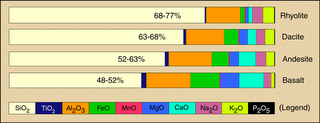
Volcanic rocks are typically divided into four basic types according to the amount of silica (SiO2) in the rock (see figure at bottom, Components of Igneous Rocks, for the plutonic equivalents of these rock types):
basalt consists of about 48-52% silica
andesite consists of about 52-63% silica
dacite consists of about 63-68% slica
rhyolite consists of more than 68% silica
Other major elements in varying proportion include titanium (TiO2), aluminum (A2O3), iron (FeO or Fe2O3), manganese (MnO), magnesium (MgO), calcium (CaO), sodium (Na2O), potassium (K2O, and phosphorous (P2O5). The bar graph shows the average concentration of each major element for the four basic types of volcanic rock.
Classification and Flow Characteristics of Volcanic Rocks
Illustration by J. Johnson

The behavior of a lava flow depends primarily on its viscosity (resistance to flow), slope of the ground over which it travels, and the rate of lava eruption. Because basalt contains the least amount of silica and erupts at the highest temperature compared to the other types of lava, it has the lowest viscosity (the least resistance to flow). Thus, basalt lava moves over the ground easily, even down gentle slopes. Dacite and rhyolite lava, however, tend to pile up around a vent to form short, stubby flows or mound-shaped domes.
Components of Igneous Rocks
Illustration by J. Johnson

When molten rock erupts onto the Earth's surface, it cools quickly, freezing the growth of existing minerals and preventing the development of new minerals. Such rapid cooling will typically produce lava rocks with a few small minerals suspended in a groundmass of volcanic glass. Molten rock that remains below the ground, however, cools very slowly so that existing minerals continue to grow and many new minerals develop. A slow rate of cooling will produce a coarse-grained plutonic rock that consists entirely of large crystals. Different names are given to such slow-cooling plutonic rocks on the basis of chemical composition and mineral proportions (for example, plutonic rocks of basaltic composition are called gabbro).
This graph shows the volume percent of minerals present in a plutonic rock that consists entirely of crystals. For example, a granite with 70% SiO2 might have 22% quartz, 38% alkali feldspar, 28% plagioclase feldspar, and 12% biotite.
The volume percent of minerals present in volcanic rocks typically varies 0-50%. To calculate the relative amounts of the crystals likely to be present, multiply the volume percent in the graph by the actual volume percent in the rock. For example, a rhyolite volcanic rock with 10% crystals, is likely to 2.2% quartz, 3.8% alkali feldspar, 2.8% plagioclase, and 1.2% biotite.
To review:
Basalt and Gabbro will contain plagioclase feldspar and olivine and pyroxene.
Andesite and Diorite will contain Feldspars (Plagioclase) and Pyroxene and Hornblende.
Dacite and Granodiorite will contain Quartz, Feldspars (Plagioclase and Alkali) and Hornblende and Biotite)
Rhyolite and Granite will contain Quartz, Feldspars (Plagioclase and Alkali) and Biotite.
Here come some pics.
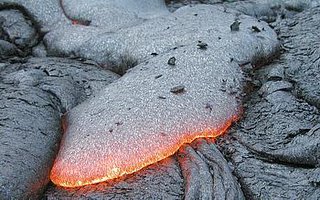 Basalt
Basalt Basalt
Basalt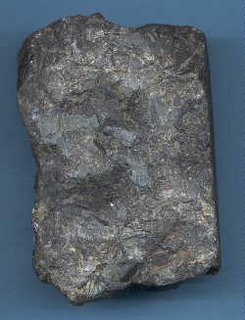 Gabbro
Gabbro Andesite
Andesite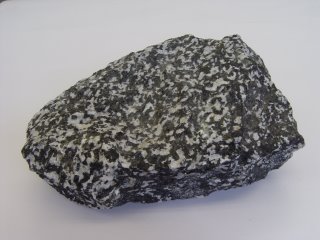 Diorite
Diorite Dacite
Dacite Grano-
Grano-diorite
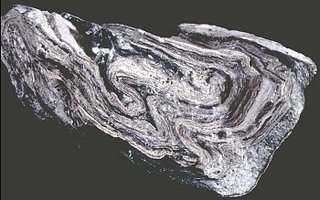 Rhyolite
Rhyolite Granite
Granite

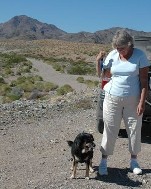




No comments:
Post a Comment